FAQ's
What is architectural ironmongery?
Architectural Ironmongery is also known as hardware & fittings for buildings and nowadays refers to items made from different types of metals.
Sometimes items are made in combination with other materials, whereas historically ironmongery originally referred to ironware & the manufacture of iron goods.
The scope of items that are classed as ironmongery is vast, but commonly known items include hinges, locks, handles and knobs, signage and wayfinding.
Ironmongery can be found on doors, windows, cabinets/furniture, and in other areas such as washrooms & bathrooms.
Ironmongery can be used for both functionality and aesthetics in a building design. Architectural Ironmongery is sold through retail and online, through specialists often referred to as an 'architectural ironmonger', as well as builders merchants.
What are ironmongery related risks and why do they matter?
A lack of architectural ironmongery safety awareness poses many risks.
Those risks vary throughout the product's life cycle, from ensuring there are accurate promotional materials and supporting evidence, to upholding standards when refinishing, fitting or installing and beyond.
As a result, competency is required from start to finish among duty holders and those with responsibility/accountability.
It is also important as a relatively small niche, that the architectural ironmongery sector attracts and retains expert professionals that can demonstrate competency to serve the wider construction and renovation markets.
Some ironmongery related risks include but are not limited to; health & safety risks, fire safety, security breaches, liability, malfunction, non-compliance, non-conformance, etc.
What are the issues to 'iron out'?
The lack of awareness of the importance of architectural ironmongery and issues surrounding competence and compliance presents itself in many ways.
This is the reason behind developing a new campaign that aims to raise awareness and move towards addressing some of the issues. Potential areas where lack of awareness contributes to issues, is for example, where;
- there is misinformation on selecting products and on compliance/conforming to performance standards
- there is unclear product information, with inconsistent terminology and there are barriers to verifying product data
-there is a lack of procurement due diligence & quality assurance
-there is a lack of resources to support the training of overlapping vocations
-there is a lack of professional benchmarking and demonstration of specific construction product competence (as relevant to the tasks being undertaken)
© Copyright. All rights reserved.
We need your consent to load the translations
We use a third-party service to translate the website content that may collect data about your activity. Please review the details and accept the service to view the translations.

